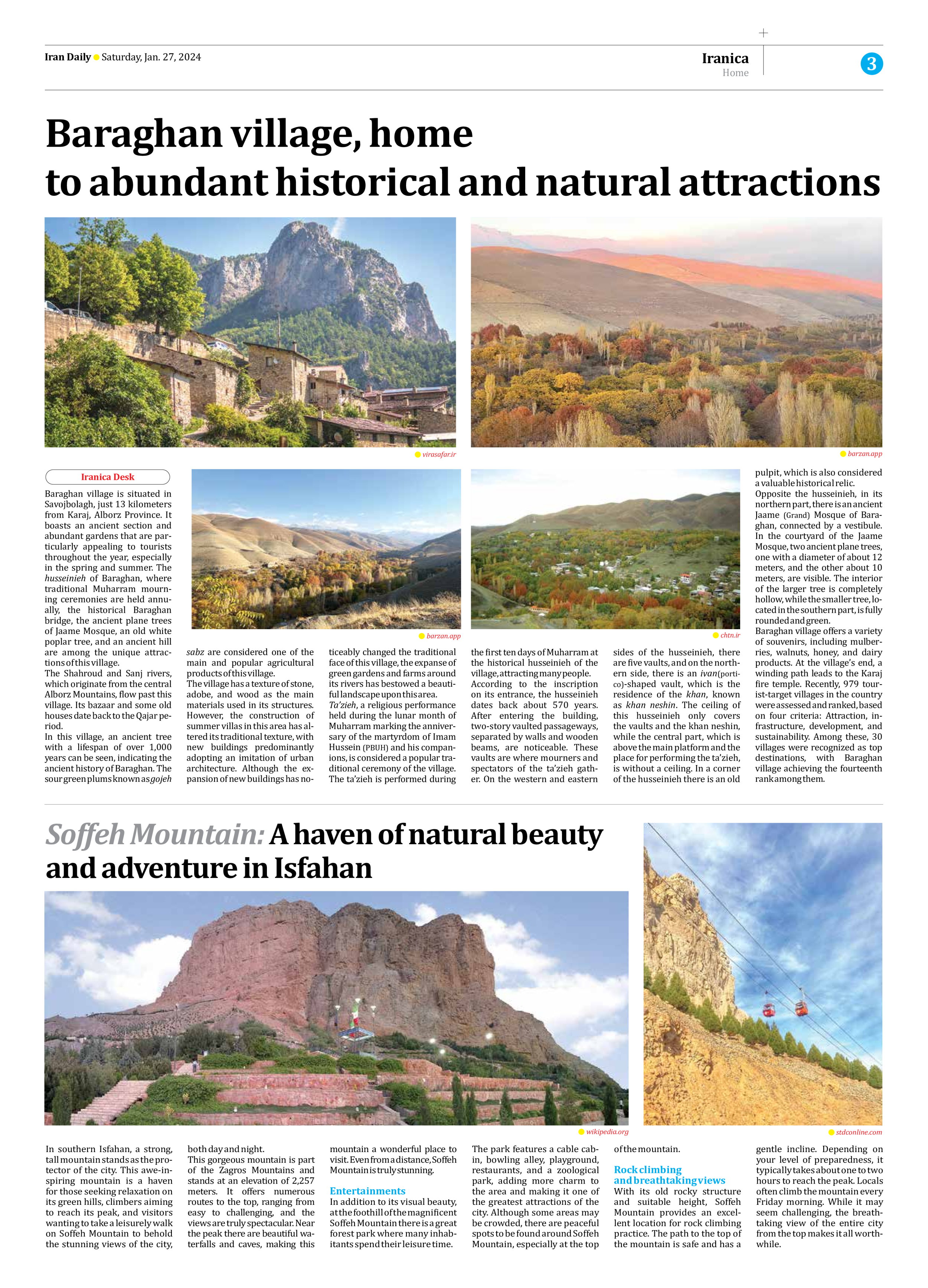
Baraghan village, home to abundant historical and natural attractions
Baraghan village is situated in Savojbolagh, just 13 kilometers from Karaj, Alborz Province. It boasts an ancient section and abundant gardens that are particularly appealing to tourists throughout the year, especially in the spring and summer. The husseinieh of Baraghan, where traditional Muharram mourning ceremonies are held annually, the historical Baraghan bridge, the ancient plane trees of Jaame Mosque, an old white poplar tree, and an ancient hill are among the unique attractions of this village.
The Shahroud and Sanj rivers, which originate from the central Alborz Mountains, flow past this village. Its bazaar and some old houses date back to the Qajar period.
In this village, an ancient tree with a lifespan of over 1,000 years can be seen, indicating the ancient history of Baraghan. The sour green plums known as gojeh sabz are considered one of the main and popular agricultural products of this village.
The village has a texture of stone, adobe, and wood as the main materials used in its structures. However, the construction of summer villas in this area has altered its traditional texture, with new buildings predominantly adopting an imitation of urban architecture. Although the expansion of new buildings has noticeably changed the traditional face of this village, the expanse of green gardens and farms around its rivers has bestowed a beautiful landscape upon this area.
Ta’zieh, a religious performance held during the lunar month of Muharram marking the anniversary of the martyrdom of Imam Hussein (PBUH) and his companions, is considered a popular traditional ceremony of the village. The ta’zieh is performed during the first ten days of Muharram at the historical husseinieh of the village, attracting many people.
According to the inscription on its entrance, the husseinieh dates back about 570 years. After entering the building, two-story vaulted passageways, separated by walls and wooden beams, are noticeable. These vaults are where mourners and spectators of the ta’zieh gather. On the western and eastern sides of the husseinieh, there are five vaults, and on the northern side, there is an ivan(portico)-shaped vault, which is the residence of the khan, known as khan neshin. The ceiling of this husseinieh only covers the vaults and the khan neshin, while the central part, which is above the main platform and the place for performing the ta’zieh, is without a ceiling. In a corner of the husseinieh there is an old pulpit, which is also considered a valuable historical relic.
Opposite the husseinieh, in its northern part, there is an ancient Jaame (Grand) Mosque of Baraghan, connected by a vestibule. In the courtyard of the Jaame Mosque, two ancient plane trees, one with a diameter of about 12 meters, and the other about 10 meters, are visible. The interior of the larger tree is completely hollow, while the smaller tree, located in the southern part, is fully rounded and green.
Baraghan village offers a variety of souvenirs, including mulberries, walnuts, honey, and dairy products. At the village’s end, a winding path leads to the Karaj fire temple. Recently, 979 tourist-target villages in the country were assessed and ranked, based on four criteria: Attraction, infrastructure, development, and sustainability. Among these, 30 villages were recognized as top destinations, with Baraghan village achieving the fourteenth rank among them.







